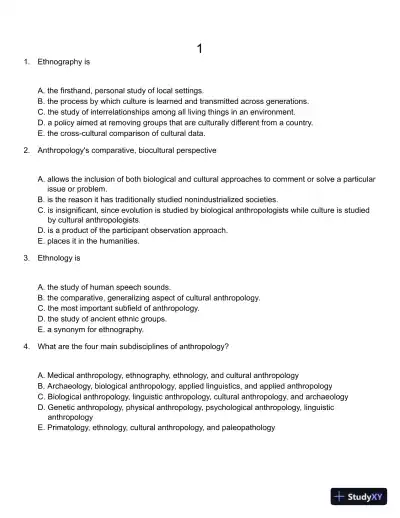Page 1

Loading page ...
Struggling with exam prep? Let Mirror for Humanity: A Concise Introduction to Cultural Anthropology 9th Edition Test Bank help you with questions and detailed answers.

Loading page ...
This document has 307 pages. Sign in to access the full document!